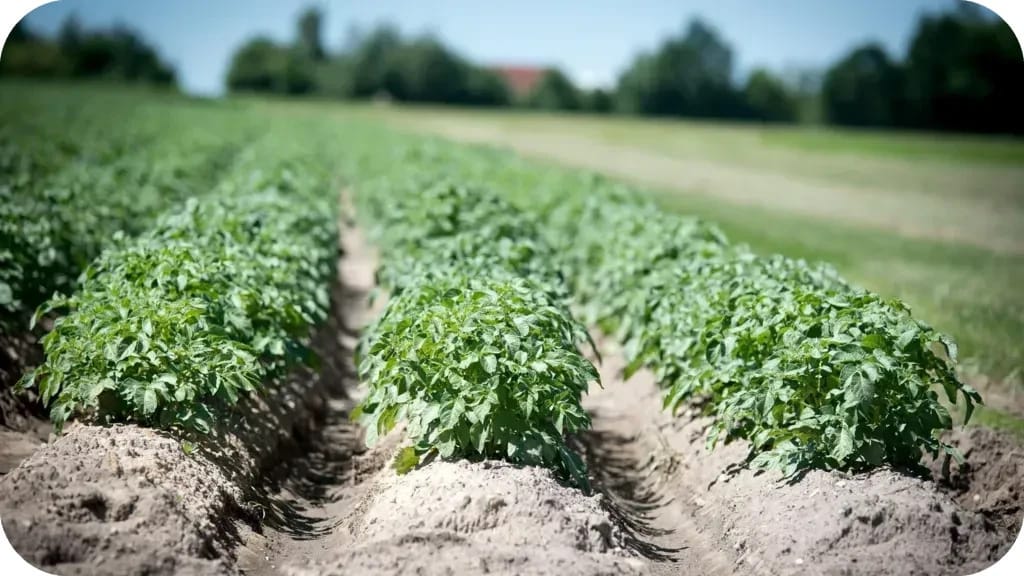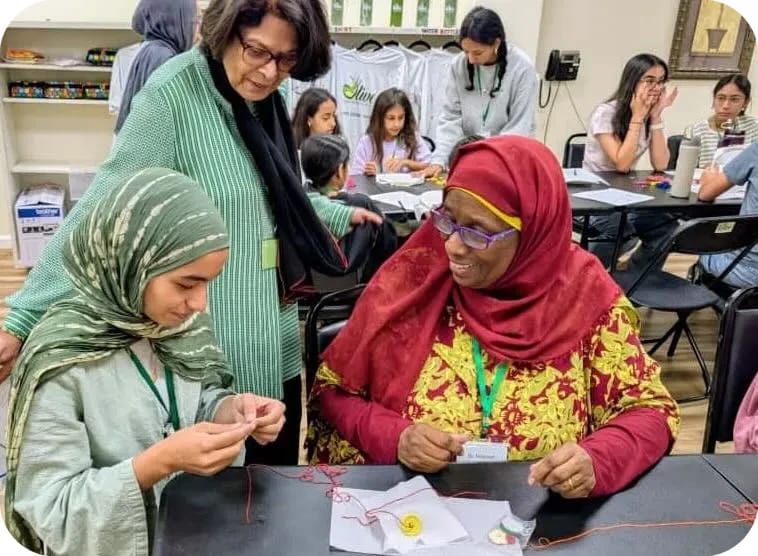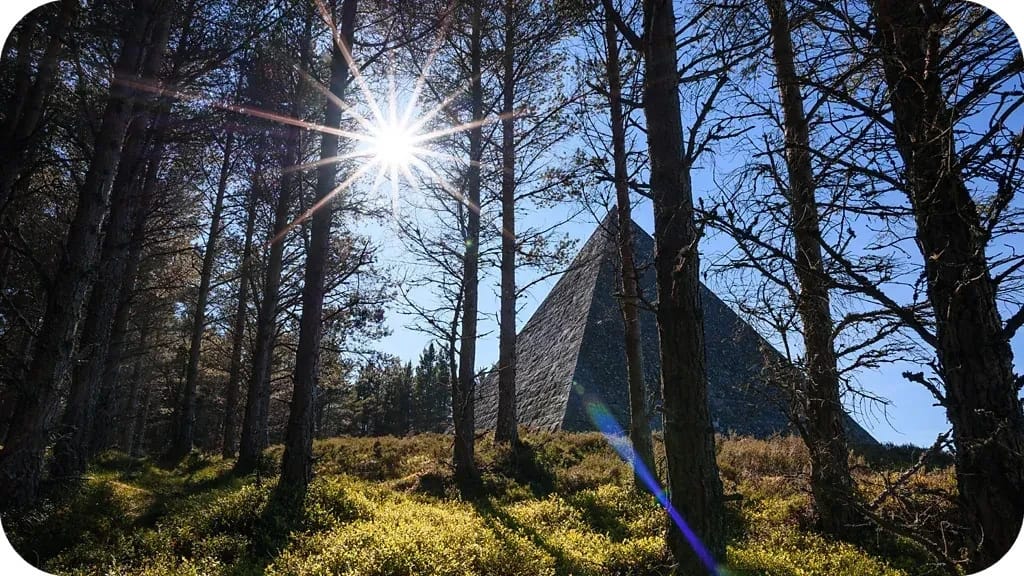- Daily Upsider
- Posts
- 🌞 Farming App Saves Billions
🌞 Farming App Saves Billions
Daily Upsider - Monday, July 28th, 2025
Monday, July 28th, 2025
Good Morning! 🌞
We hope you're in a relaxed mood today—because this bear certainly was. In a true “don’t bother me, I’m off the clock” moment, a hefty visitor wandered into a California family’s backyard and made himself very comfortable. We’re talking full-on poolside lounging. No email. No chores. Just vibes.
If a bear can unapologetically unwind by the pool like that, surely we all deserve to take a breath today. Here’s your reminder to slow down, kick back, and maybe even put your feet up—preferably not next to a bear though! 🐻
@cbsnews This bear is a weekend mood. Watch how it chills in one family's backyard in California and even lays by their pool. #animals #bear #california
Today’s Upside
Innovation
Farming App Saves Billions

Potato blight is responsible for £3.5bn in economic losses worldwide - Wolfgang Ehrecke
Scientists in Wales are developing an AI-powered app designed to help farmers detect late blight, a devastating fungal disease responsible for 20% of global potato crop losses and an estimated £3.5 billion in annual economic damage. Spearheaded by researchers at Aberystwyth University as part of the DeepDetect project, the tool uses machine learning to diagnose late blight before any symptoms are visible to the naked eye—simply by analyzing photos taken with a smartphone. Early detection could lead to healthier yields, lower costs, and a reduced reliance on harmful pesticides.
The app’s development is grounded in collaboration with the farming community. "By integrating farmer feedback from the outset, we will ensure that this technology is grounded in real-world needs and challenges," said Edore Akpokodje, a computer science lecturer at Aberystwyth. In Wales alone, farmers spend more than £5.27 million each year on preventive spraying. If widely adopted, the app could significantly reduce that burden—easing both environmental and financial pressure on the agriculture sector.
Potatoes are a vital global food source, and in Wales, over 17,000 hectares are devoted to cultivating them. The research team is currently training the app’s algorithm using image datasets of both healthy and infected potato leaves, with plans to roll out a nationwide early warning system in the future. "Potatoes are the fourth most important staple crop globally, and optimal production is essential for a growing global population," said Aiswarya Girija from the Institute of Biological, Environmental and Rural Sciences at Aberystwyth University. "Potato blight is therefore not just a farming issue—it's a food security issue."
Lifestyle
Lost Arts, Found Wisdom

Haqiqa Abdul-Rahim teaches 14-year-old Leena how to sew on a button during The Golden Connections Club – Courtesy of Olive Community Services
In a room in Fullerton, California, a group of high school girls is spending their summer learning skills that were once second nature: sewing, ironing, cooking, and embroidery. But instead of turning to YouTube or TikTok, they’re learning the old-fashioned way—from grandmothers. Every Tuesday and Thursday in July, members of the Golden Connections Club—a student-led group from Garden Grove—gather at Olive Community Services for a four-week intergenerational program where seniors teach teens practical, hands-on skills that have largely faded from daily life.
The program was founded by Leena Albinali, a high school sophomore who grew up close to her grandmother and wanted to bridge the growing gap between generations. “There’s so much wisdom that lives in our older generation,” Leena says. “We want to learn from them—not just about skills, but about life.” Inspired by Olive Community Services’ broader mission to keep seniors engaged—particularly those from immigrant or underserved communities—Leena saw an opportunity. Many of her peers didn’t know how to sew on a button, so she pitched a simple idea: why not have seniors teach them?
Each week, students participate in craft and cooking sessions—one day might feature spring rolls, another hand-stitching. While the techniques take practice, perfection isn’t the point. The focus is on connection. For the older adults, the camp offers a renewed sense of purpose and helps combat isolation. And for the students, it’s a reminder that friendships can transcend age. As one teen shared, “I thought it was just going to be cooking. I didn’t expect to make a new friend who’s 80.” These aren’t lessons found in a textbook—they’re passed down the old way: face to face, and hand to hand.
World News
The Secret Royal ‘Pyramids’

Getty Images
Tucked away in the forests of Balmoral—the beloved Scottish royal estate once cherished by Queen Victoria—are 11 stone cairns that quietly echo the legacies of a bygone era. Scattered across nearly 50,000 acres, these unassuming memorials blend into the Highland scenery like secrets waiting to be found. Built to mark royal milestones—marriages, births, and losses—they form a hidden network beyond the manicured gardens and grand architecture of Balmoral Castle. The most striking of them all, often called “the Great Pyramid of Scotland,” is a towering granite monument nearly 11 meters high, perched atop Craig an Lurachain with a sweeping view of Royal Deeside.
The journey to these cairns begins near the Balmoral car park at Crathie and winds through dense Scots pine, firs, and hemlocks. The trails lead hikers uphill into the eastern Cairngorms, where birdsong and rustling red squirrels accompany them. Early cairns, like those for Princess Helena and Princess Louise, are modest. Others, such as the Purchase Cairn from 1852—commemorating Prince Albert’s acquisition of the estate—offer commanding views from Craig Gowan and mark key moments in royal history. “Princess Louise's cairn has perhaps the most interesting backstory,” says Professor Ewen Cameron of the University of Edinburgh. “She was the sixth child and fourth daughter and married John Campbell, the 9th Duke of Argyll, and this helped strengthen the family's ties to the Highlands, which was so important to Queen Victoria.”
The largest cairn, built after Prince Albert’s death in 1861, crowns a steep ascent and offers one of the most dramatic views in Cairngorms National Park. “The cairns are a fabulous, if unlikely, addition to the estate,” notes heraldist and historian Gordon Casely. “They're absolutely intriguing, as each one has its own backstory and design… their legends are worth telling.” While Balmoral Castle itself is only open to the public for a few months each year, it’s the surrounding trails that offer a deeper reward. On a clear day, the Prince Albert cairn reveals a landscape of rolling hills, shimmering granite, and a near-sacred stillness. These monuments, nestled quietly in the landscape, reflect Queen Victoria’s deep romanticism for Scotland—an ideal still echoed in the public imagination through art, literature, and the untouched beauty of the Highlands.
How was today's newsletter? |
Support Daily Upsider!
Help our mission to share positive, meaningful news! Your support keeps us going without the need to bombard you with annoying ads!

🕰️ Motivational Monday: It’s Not Too Late
They said “you’re too old.” You smiled, started anyway.
This week, prove them wrong—again.
What’s one thing you’re finally doing for you this week?
👉 Hit reply and tell us.
Mind Stretchers
⁉️

Yesterday’s Mind Stretchers:

— red cross! James and Jennye Smith got this correct first! 🌞
The first to send us the correct answer for today’s mind stretcher for a shout-out with the answer tomorrow. Just send us the answer and your name to [email protected] or reply to the email.
From the Community
If you have any uplifting stories and experience you might want to share, send those over to [email protected] for the chance to be featured
Reply